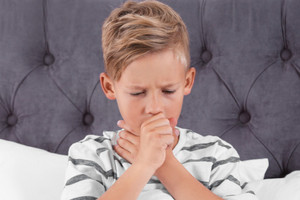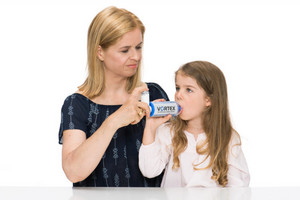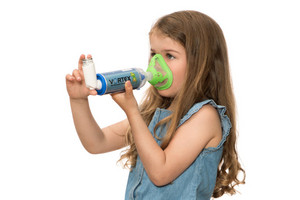Life with asthma can be a challenge. There are now a wealth of good treatment options that allow asthmatics to live a largely normal life. But there are still typical problems that asthmatics face. Our overview has links with information on common challenges and tips for day-to-day life for children who have asthma.
About five to ten percent of all children are affected by asthma. The chronic respiratory disease is characterised by a bronchial system that overreacts to a range of influences – such as pollen, exertion, cold air, dust, stress and other irritants. When this happens, the airways narrow, which then affects breathing. Added to this, the bronchial mucous membranes swell up and produce more mucus which children sometimes then find difficult to cough up.

Problems with breathing can trigger a state of panic. Children with asthma have to learn to get their breathing under control in situations like this and to calm themselves down. Breathing exercises against breathlessness and panic attacks can help here.
Generally, it is advisable that children with asthma train their breathing and learn important breathing techniques.

Most children with asthma have to inhale sprays several times a day. It is very important that they use the correct inhalation technique to do this as this is the only way for the medication to have its full effect. But children sometimes find it difficult to get the inhalation technique right. We have compiled 6 tips for you on inhalation of asthma sprays and metered-dose aerosols in children.
Doctors often recommend an inhalation aid such as the VORTEX. The instructions for spacer inhalation with children show how to use one of these.
There are also answers to frequently asked questions in our FAQs on inhalation with asthma.
The right technique is not the only challenge when it comes to inhalation therapy in children. Sometimes it is difficult to motivate the child to do their regular inhalation therapy. This can also apply if the child not only has to inhale sprays but also has to have inhalation therapy with a nebuliser (electric inhalation device). These motivation tipsmay help you if you child does not want to do their inhalation therapy. A mother also tells of her experience with inhalation in her child with asthma and chronic bronchitis.

A standard therapy for children with asthma is the inhalation of bronchodilator sprays containing cortisone, generally known as asthma inhalers. The cortisone is an important drug in asthmatics but it can also cause side effects – such as oral thrush, hoarseness and a dry mouth. Here is a list of the most common side effects of cortisone sprays for asthma and what you can do to help your child counteract them.
Note: The information in this blog post is not a treatment recommendation. The needs of patients vary greatly from person to person. The treatment approaches presented should be viewed only as examples. PARI recommends that patients always consult with their physician or physiotherapist first.
An article written by the PARI BLOG editorial team.
© 2025 PARI GmbH Spezialisten für effektive Inhalation